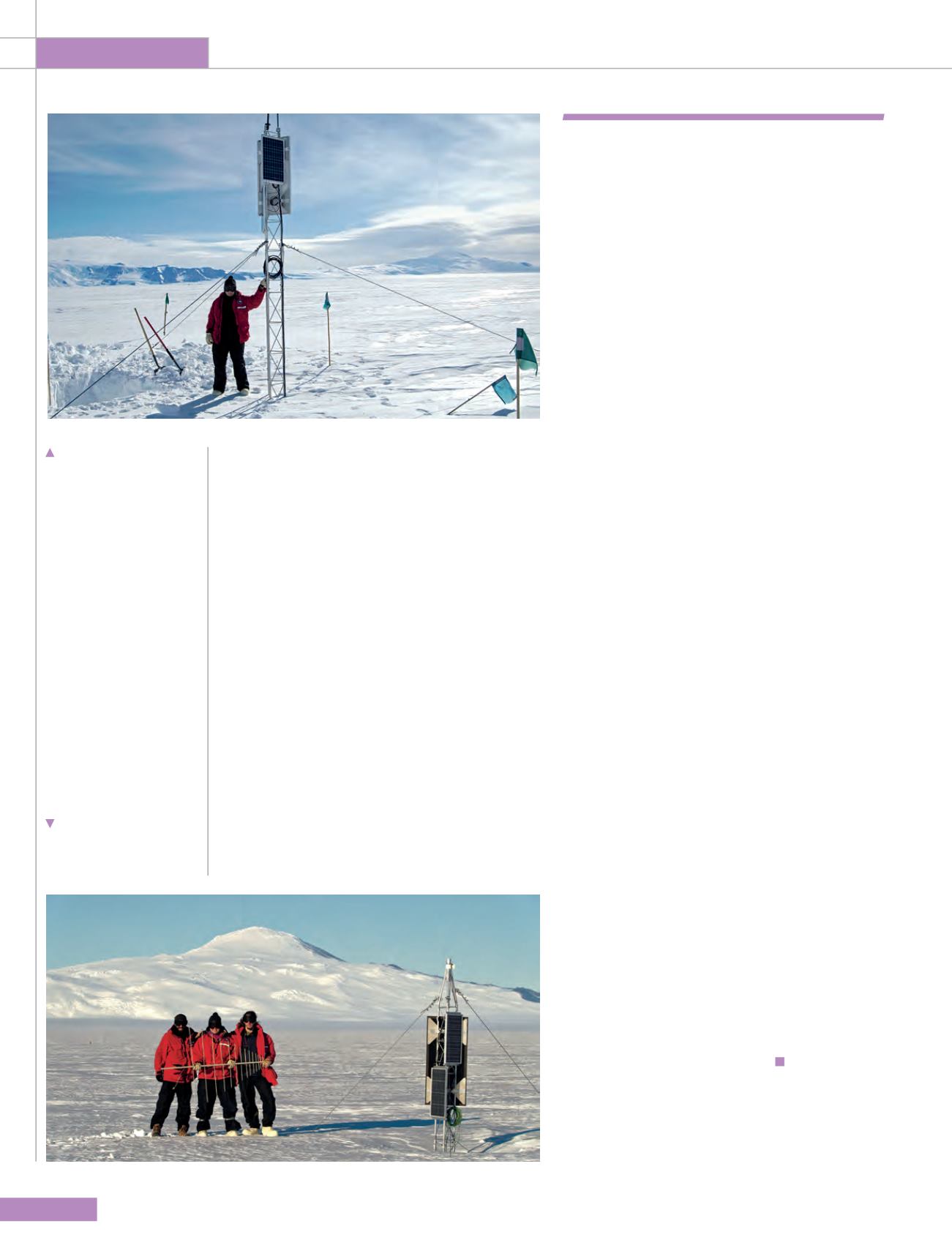
ROOM
92
Space Science
yet. In fact, any supposed neutrino detection
would bring the feasibility of the detector and
the predictions of cosmogenic neutrinos under
pressure. It would be incredibly good luck, at
this stage, to detect a neutrino signal and highly
suspicious if an unknown background event that
mimicked neutrino signals were recorded.
Most of the currently recorded events are
dominated by thermal noise, such as that heard
when a radio is turned to a frequency where there
is no station transmitting. In this thermal noise,
coincidences between spikes in two antennas actually
happen by unrelated coincidences, so some data is
always recorded. Despite being called thermal noise, a
part of the radio background is caused by the diffuse
synchrotron emission of the Galaxy. So technically,
ARIANNA is detecting a galactic signal already, though
it is not caused by neutrinos. While this irreducible
background limits the minimum energy a neutrino
needs to have in order for it to be detectable, the fact
that the Galaxy is detected without additional analysis
is a sign of the wondrous harmony between an
impressive detector and a perfectly chosen site.
Signals more similar to neutrinos are caused
by cosmic rays that interact in the atmosphere.
A cosmic ray interaction in the atmosphere
also causes a particle cascade, which in turn is
the cause of radio emission. In air, the particle
cascades are somewhat larger and affected by the
magnetic field of Earth; still, their radio signals are
intrinsically similar to the radio signals expected
from neutrinos. The only difference is that neutrino
signals will come from the ice and cosmic ray
signals from above. This is where directionality of
the antennas comes into play.
The full ARIANNA will have up- and downward-
pointing antennas at every station, which will
allow for an easy differentiation between neutrino
and cosmic ray signals. While the latter are more
abundant - after all cosmogenic neutrinos are
caused by a fraction of cosmic rays - it is inevitable
that we will detect them. In contrast, a non-
detection should have us worried about detector
performance and feasibility.
The future
Where is ARIANNA going from here? For now, we
will improve on detecting cosmic rays, as they will
act as a calibration source for ARIANNA. A pulse of
a couple of nanoseconds detected in one stations
is enough to reconstruct the direction of the
cosmic ray and give an estimate of its energy.
Despite not knowing too much about the
sources of ultra-high energy cosmic rays, their
energy distribution is well-known. If ARIANNA’s
technique can reconstruct the same energy
spectrum, we will have proof that the same will
work for neutrinos and that we are ready to tackle
the search for cosmogenic neutrinos.
This work will start as soon as the full suite of
stations - at least 1200 of them - is deployed on
the Ross ice-shelf which in itself poses a whole
other logistic operation. Nonetheless, exciting
times lay ahead and soon we will hopefully be
reporting on a real neutrino detection thus
providing a conclusive statement as to the sources
of ultra-high energy cosmic rays.
About the author
Dr Anna Nelles is a postdoctoral researcher and DFG fellow working at
the University of California Irvine. Her research interests include, radio
detection of neutrinos and cosmic rays with various instruments, such
as ARIANNA, LOFAR or the Pierre Auger Observatory.
Anna Nelles in front of
station tower with hole to
access the station
electronics.
Team in Antarctica next
to a station, holding an
antenna for illustration
purposes.
What sounds perfectly straight
forward in normal conditions is
not... in Antarctica
Corey Reed/ARIANNA
Corey Reed/ARIANNA


